
Set in an abandoned slaughterhouse in North Denver’s Globeville neighborhood, Control Group Productions’ newest work, Aggregate Immateriality, takes participants on a journey as they follow a drifter through her transition from life into death. The company hopes to tie together subject matter like near-death experiences; The Tibetan Book of the Dead and The Jungle; navigational tactics of the visually impaired; permaculture design principles; and the history of the Globeville meat-packing industry into this work.
Aggregate Immateriality will also be GCP’s largest work to date. It’s the culmination of the the 4-year, 7-work series dances made to be viewed in the dark. We spoke to Director Patrick Mueller over email as they prepare the show to learn more.
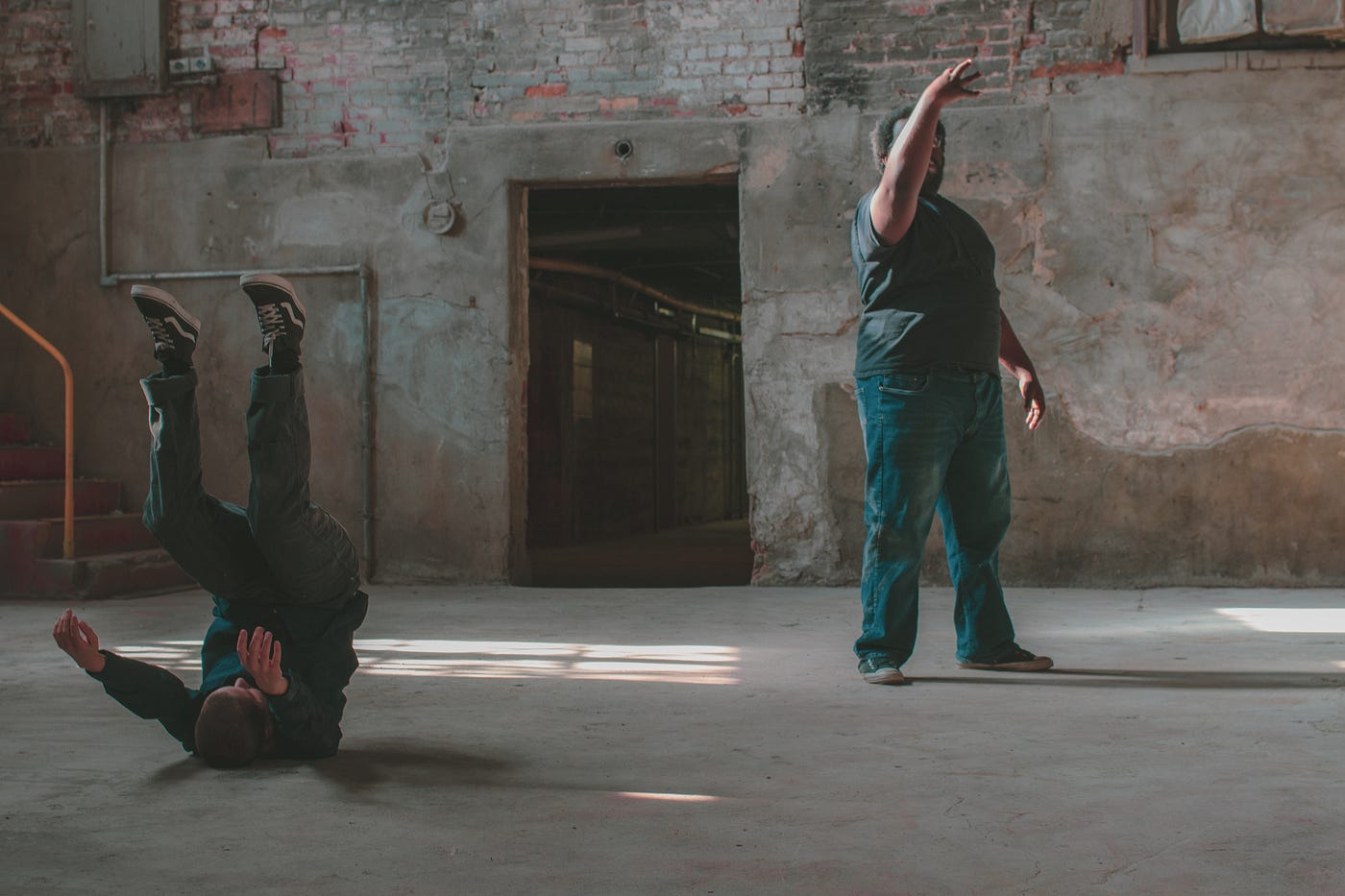
No Proscenium (NP): Can you tell us a little about yourself and your background in the immersive arts?
Patrick Mueller (PM): I came to performance late (when I was 20 years old), from visual art and creative writing into performance art and the contemporary dance world. Everything about creating performance was new to me, and I mostly thought the construct of the stage, particularly the “void” of modern dance staging, was strange and stilted.
I worked with dance companies and project artists in New York, and then in Germany and Denmark, did some site projects, played with video, and learned a lot about process; and then I moved back home to Denver and founded Control Group.
From the beginning we were distinctly post-proscenium, taking each venue as a site to respond to and transgress against. We did a bunch of pop-up activities at parties and openings where we experimented with proximity and interaction, and we started pushing into this territory more purposefully — but entirely as experiment. We’d heard about Sleep No More, of course, and had a sense that, out there over the provincial horizon, people were innovating in these directions; but it wasn’t until Sweet & Lucky happened in Denver that I understood that there were methodologies and bodies of knowledge developing around this new term “immersive theatre.”
I originated a role in Sweet & Lucky and performed 75 or so of the 90 shows it ran. The show, and working with Zach Morris and the rest of the Third Rail team, exploded my understanding of how performance can be envisioned, structured, and created.
In various ways, every project since then has been tussling with that new information and the new spaces for exploration that it opens up in performance.
NP: What, in a nutshell, is Aggregate Immateriality about?
PM: I’m terrible at nutshells, but, in a nutshell, death. Or really, our relationship with it, as the ultimate unknowable.
Since 2015 we’ve been building a series of works called dances made to be viewed in the dark — an exploration of the sensory experiences and cultural contents of darkness. We often create in series — not in sequential narratives, but in a visual art sensibility, with each work a freestanding experience for audiences, built on the ideas and discoveries of the past ones. This allows us to engage different facets of a large-scope exploration, instead of trying to put everything we find into a single work.
Aggregate Immateriality is the final work in the dark series. Literally, the title means mass disappearance, or the sum total of what isn’t. The event explores the common cultural parallel drawn between darkness and death — as the ultimate unknowable spaces, often repositories for fear. The event offers a series of experiences that aim to help us deflate/embrace/find harmony with instinctual fears, to invigorate our senses and our feeling of being alive.
NP: Why did you create this experience? What inspired you?
PM: The dances made to be viewed in the dark series started from various impulses, including a deep love of physical darkness, a fixation on “dark” topics that I don’t find dark (as in depressing, evil, whatever), an interest in strategic sensory deprivation as a powerful sensory stimulant, and a desire to take people with me into these spaces that most people avoid.
I tend to build vast, sprawling project concepts — constellations of ideas and contents, where the lines between seemingly disconnected things becomes contents as well. Over the whole series, we’ve explored topics ranging from the biology of vision and the chemistry of fear-instinct to PTSD and the pre-HIV gay scene. Aggregate Immateriality draws on depictions of purgatories/bardos/waiting rooms; on personal nightmares and dreamscapes; on spa structures and treatments; on local history of the Globeville neighborhood — the most polluted urban space in the country, and the center of what was Denver’s largest industry, meat-packing; and other topics…
The basic drive of all of these research trajectories, though, is to build the world around the guests — a world that is experiential cohesive and singular, that takes them into themselves and opens them up to receive the “gifts” that are the core contents of the show: a series of kindnesses and lovelinesses that you have to venture into the darkness to experience.

NP: Can you tell us a little about your unique venue for this show?
Get Kathryn Yu’s stories in your inbox
Join Medium for free to get updates from this writer.
SubscribeSubscribe
PM: So, I think this is the most I’ve said about Aggregate Immateriality without mentioning: it’s in the catacombs of an abandoned slaughterhouse!
It’s a truly stunning industrial wreck. According to graffiti left by employees, the kill floor was closed in 1968, which is right when the whole industry was drying up in Denver and moving out to smaller towns, closer to ranches and feedlots. The building has a couple tenants, but we’re using 15,000 square feet that feels like it hasn’t been used for anything for years, decades maybe.
We got the building last fall, just as we were headed into our first company workshop of the project, and it’s become a huge character and driver of contents in the show. It’s gorgeous throughout, and incredibly creepy — not in jump-fright kind of way, but it feels like a trespass the whole time you’re there. We’re using a lot of it as raw site, but it’s incredible to see what simple design gestures can do is space this potent. And we have several fully transformed environments that are literally unreal…
And it’s obviously an amazing fit to the concept, which was already focused on death, and is now happening in a place designed specifically for mass slaughter. It creates an unparalleled context for the conversation — it keeps it absolutely real and concrete, you feel death in the air and the pores of the space, so sitting with it isn’t a hypothetical exercise, it’s right there with you.
NP: How is the audience incorporated into the work? What kinds of choices can the participants make?
PM: Aggregate Immateriality is a dark ride, or tracked experience. In a lot of ways it’s is more experiential and site-specific than deeply audience-driven. There are plenty of tasks and conversation, and but the work is really not plot-driven or tethered to psychological realism of character or world, so the overall casting of the audience is pretty loose.
A lot of the audience participation has a somewhat formalized, even ritualistic structure — invitations to engage in familiar activities with known outcomes, with the performers serving as guides in how to act in this world between worlds. And a lot of the interaction comes in the form of giving and receiving gifts. This all tilts back toward the basic goal of opening audience to experience — less about them making choices in what they experience, but a good amount of agency in how they engage it.
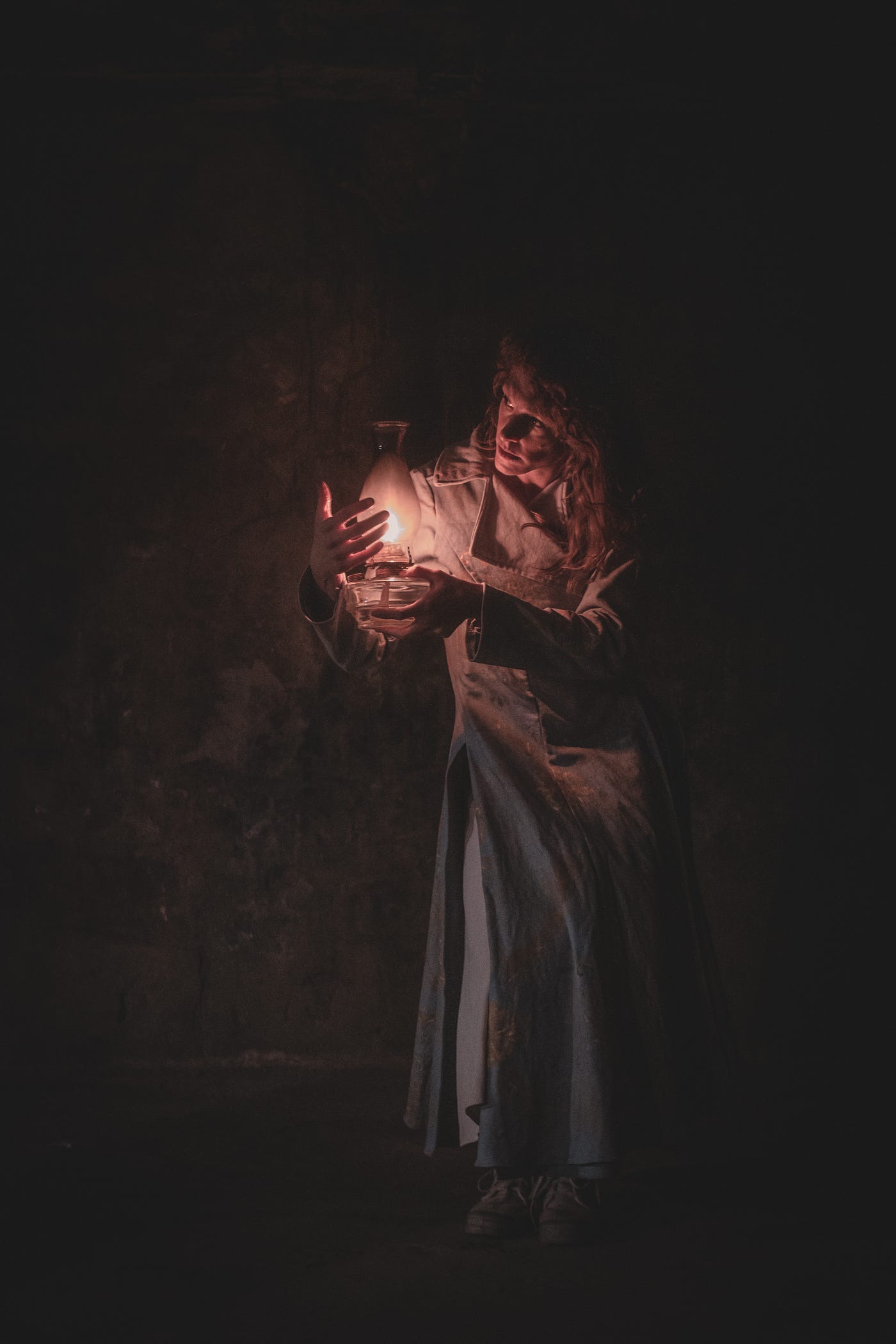
NP: How are you designing around audience agency, consent, and safety?
PM: We’ve put a lot of thought into how we meet audiences where they are — where they are in their heads/hearts/selves, and where they are physically, in a building full of real dangers of tripping, head injuries, etc. Our goal with this work is a very gentle, welcoming experience, that creates a balance with the creepy slaughterhouse, and the fact that we keep turning off the lights.
We keep interactions and tasking invitational. There are a couple areas where guests have more agency to explore, and we’re working on a healthy balance of pay-offs for diligent exploration; but for the most part guests don’t need to make certain, specific decisions to have the best or the intended experience.
Safety is our biggest concern is a venue as raw as this. We’re obviously prepping the space thoroughly, but it’s not a space that we can simply make “safe” as such. Simple choices about where audience can go, where they walk and stand in scenes, are all safety-conscious decisions. We’ve built a lot of warnings and awareness building into the beginning of the experience, and are focusing our play-testing on safe movement through some of the more hazardous areas. The content is on our side here, as well: by generally stimulating more sensory awareness and attention to surroundings, we’ll be putting guests in an observant space that will make our job of keeping them safe a little easier.
And we’re achieving a goal that not every work of ours can deliver: the entire experience is ADA-compliant, and accessible to people not able to walk or stand for 90 minutes straight.
NP: Who is the ideal audience member for this show?
PM: If you’re still reading to this point in the interview, it’s DEFINITELY for you, and probably a whole pile of your friends and loved ones!
Seriously, though, I think this work is for a lot of people. If you’re just looking for a good story, or you just want to sit there and get some escapist entertainment, it’s probably not for you. But I’m pretty pleased with how the show arrives at what I think are “eminently engageable risks” — it definitely has elements that will challenge people (driving to a strange part of town, sitting in a prolonged darkness, etc.), but it then pretty quickly rewards you for taking that risk. The overarching concept is heady, but the experience itself is very visceral, rich, and accessible.
NP: What do you hope participants take away from the experience?
PM: I hope they walk out feeling radically, maybe even transcendentally alive. I also hope that the experience proves completely unforgettable, and that they learn something about the Globeville neighborhood, the meat-packing industry, gardening, absinthe, etc. But the main thing we’re aiming for is an invigoration of the senses and the feeling of being alive that folks carry out of our fabricated world into their real one.
Aggregate Immateriality runs April 3–28 in North Denver.
NoPro is a labor of love made possible by our generous Patreon backers. Join them today!
In addition to the No Proscenium web site, our podcast, and our newsletters, you can find NoPro on Twitter, Facebook, YouTube, Instagram, in the Facebook community Everything Immersive, and on our Slack forum.
Office facilities provided by Thymele Arts, in Los Angeles, CA.


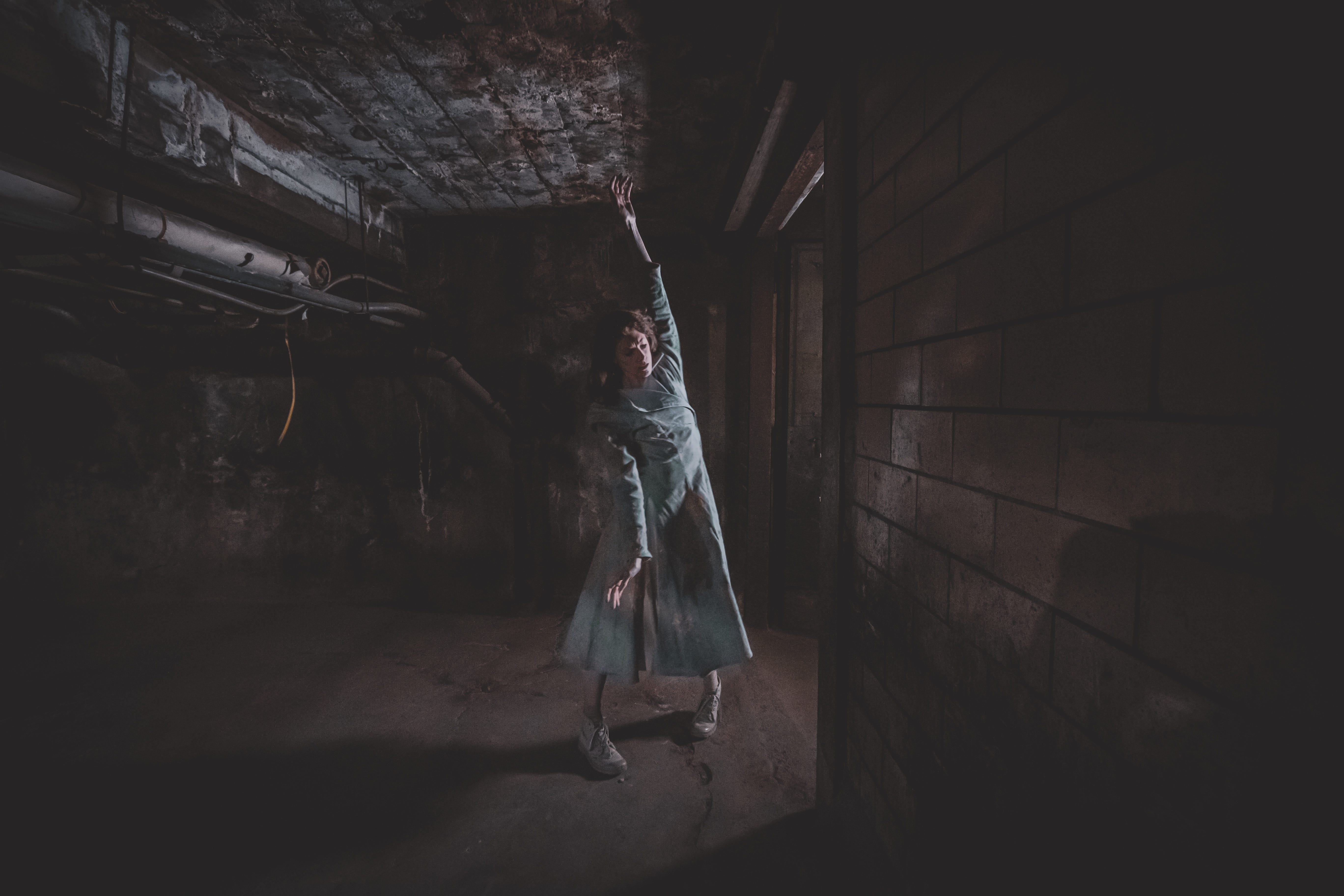





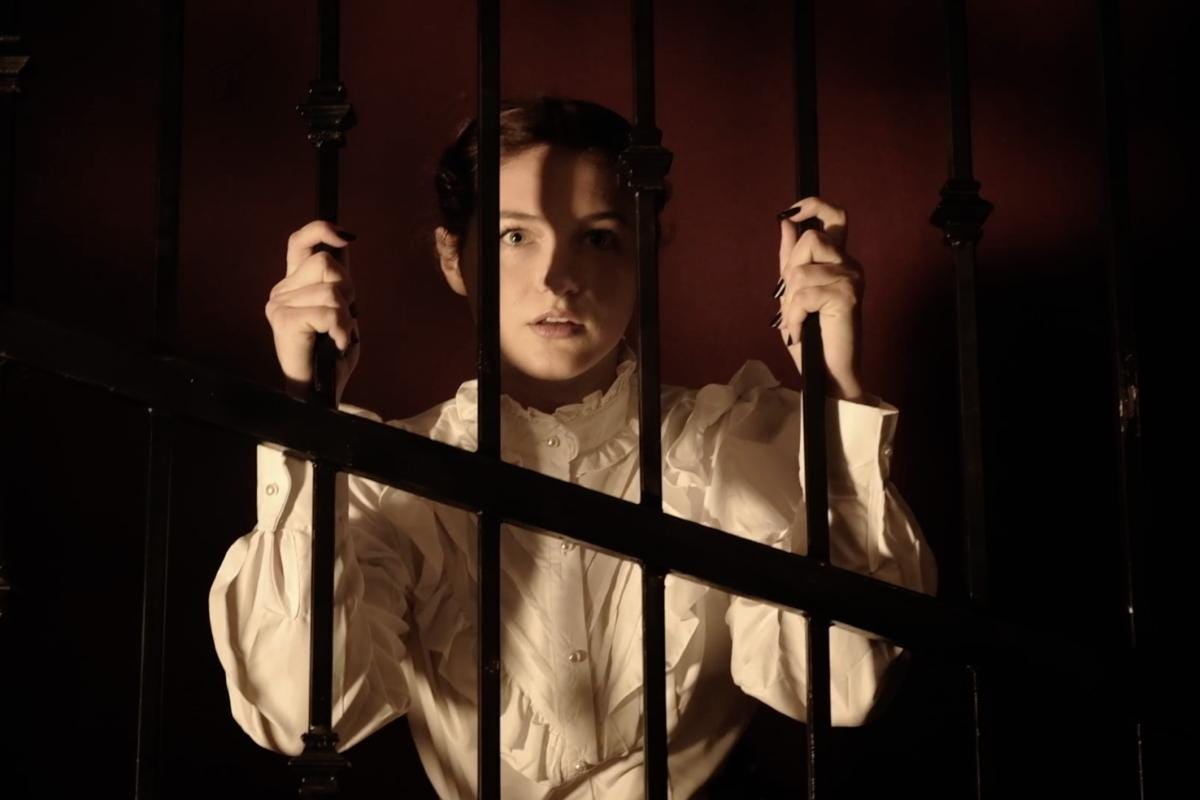





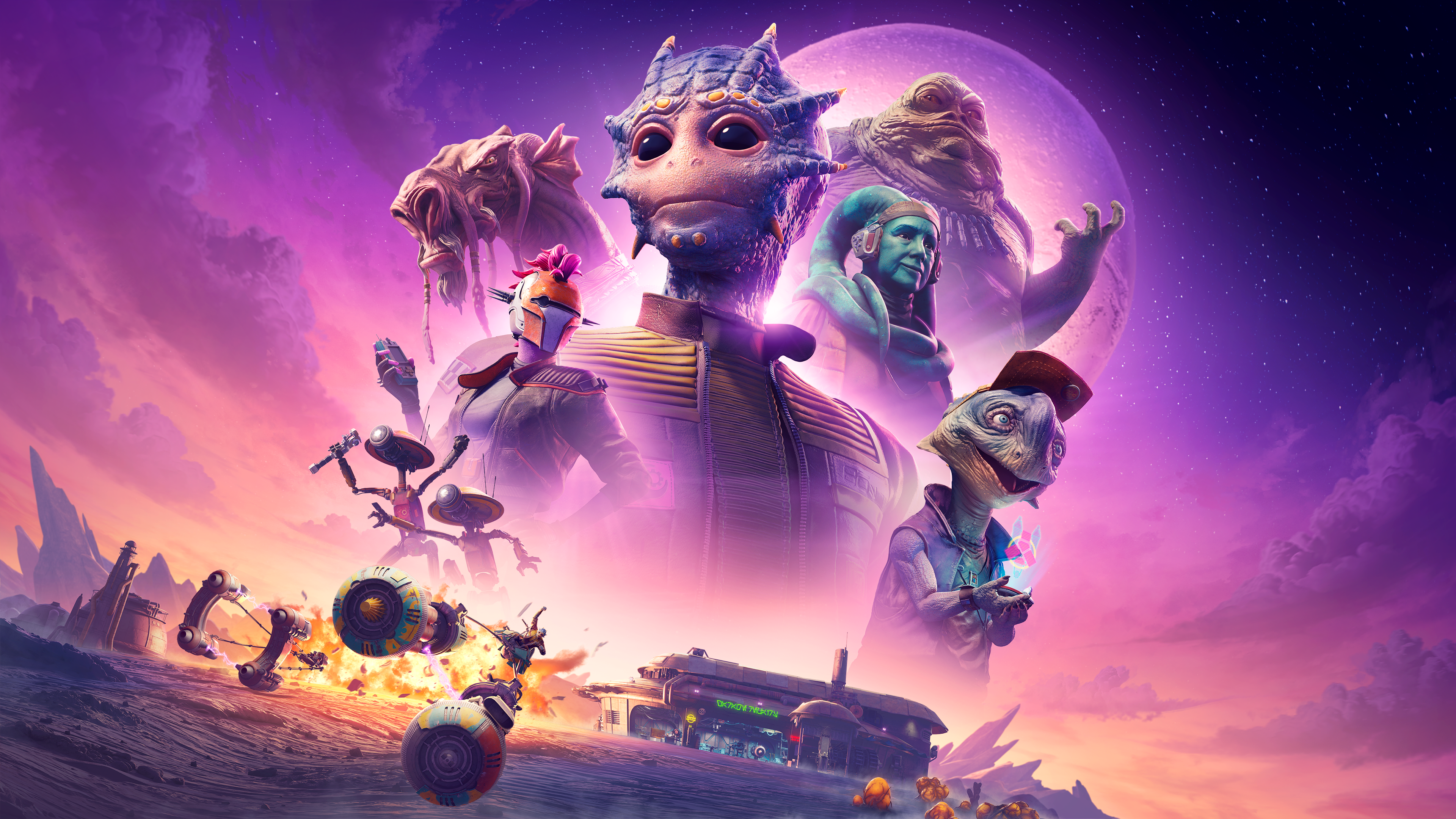
Discussion